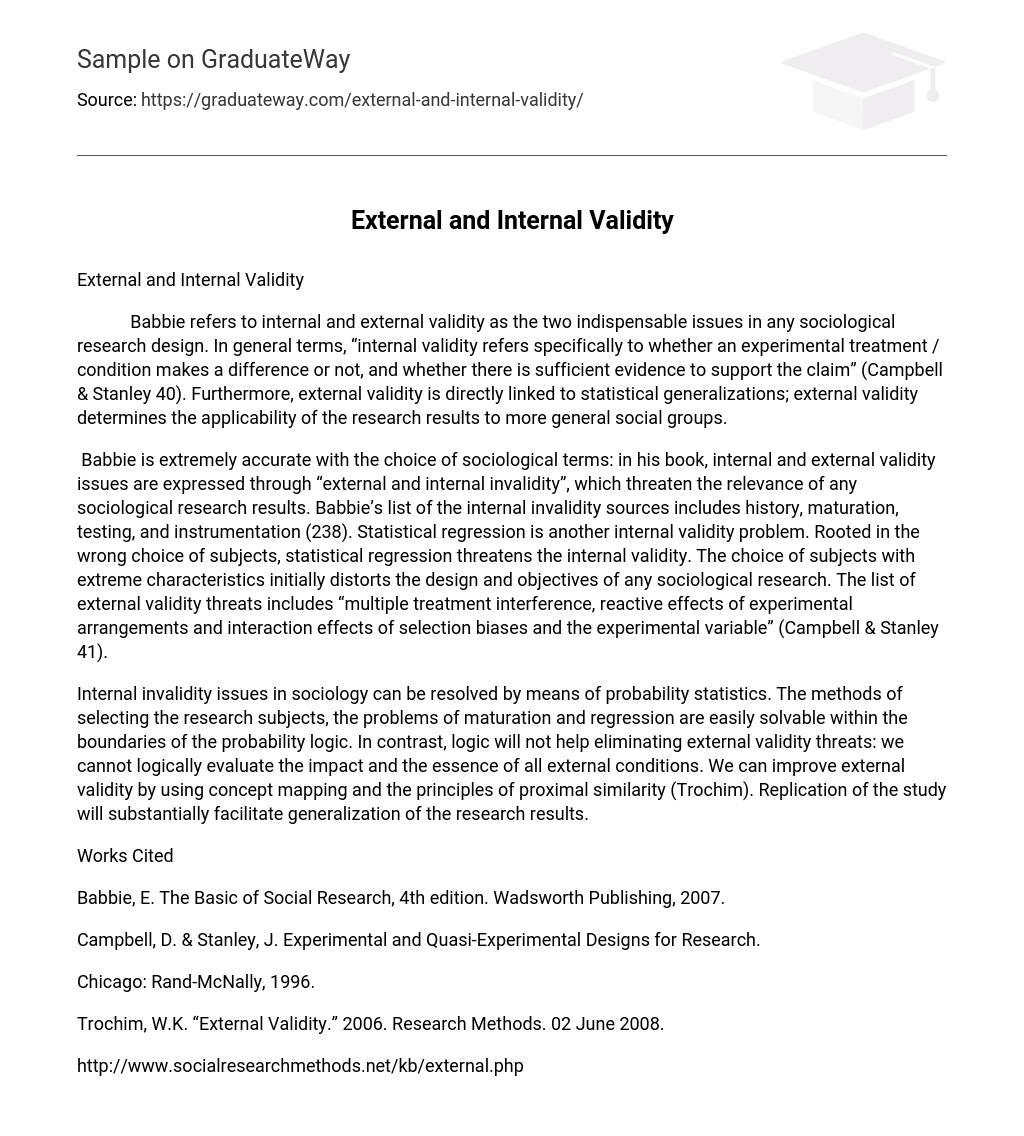Babbie refers to internal and external validity as the two indispensable issues in any sociological research design. In general terms, “internal validity refers specifically to whether an experimental treatment, condition makes a difference or not, and whether there is sufficient evidence to support the claim” (Campbell & Stanley 40). Furthermore, external validity is directly linked to statistical generalizations; external validity determines the applicability of the research results to more general social groups.
Babbie is extremely accurate with the choice of sociological terms: in his book, internal and external validity issues are expressed through “external and internal invalidity”, which threaten the relevance of any sociological research results. Babbie’s list of the internal invalidity sources includes history, maturation, testing, and instrumentation (238). Statistical regression is another internal validity problem. Rooted in the wrong choice of subjects, statistical regression threatens the internal validity. The choice of subjects with extreme characteristics initially distorts the design and objectives of any sociological research. The list of external validity threats includes “multiple treatment interference, reactive effects of experimental arrangements and interaction effects of selection biases and the experimental variable” (Campbell & Stanley 41).
Internal invalidity issues in sociology can be resolved by means of probability statistics. The methods of selecting the research subjects, the problems of maturation and regression are easily solvable within the boundaries of the probabilistic logic. In contrast, logic will not help eliminate external validity threats: we cannot logically evaluate the impact and the essence of all external conditions. We can improve the external validity by using concept mapping and the principles of proximal similarity (Trochim). Replication of the study will substantially facilitate generalization of the research results.
Works Cited
- Babbie, E. The Basic of Social Research, 4th edition. Wadsworth Publishing, 2007.
- Campbell, D. & Stanley, J. Experimental and Quasi-Experimental Designs for Research. Chicago: Rand-McNally, 1996.
- Trochim, W.K. “External Validity.” 2006. Research Methods. 02 June 2008.
- http://www.socialresearchmethods.net/kb/external.php





